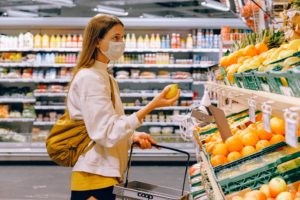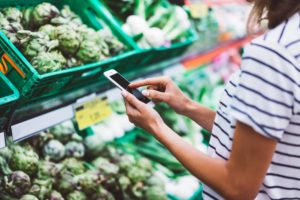 Supply chain traceability is often heralded as the future of food safety. Traceability in the food supply chain plays a crucial role in enabling swift and effective responses to food safety incidents. With traceability, businesses can easily track a contaminated food to its source, allowing them to manage an outbreak more quickly and efficiently. This in turn increases food safety and reduces foodborne illnesses.
Supply chain traceability is often heralded as the future of food safety. Traceability in the food supply chain plays a crucial role in enabling swift and effective responses to food safety incidents. With traceability, businesses can easily track a contaminated food to its source, allowing them to manage an outbreak more quickly and efficiently. This in turn increases food safety and reduces foodborne illnesses.
While many advances have been made in terms of supply chain traceability, there is still more to be done. The more information food businesses have about their products, suppliers, and supply chains, the more quickly and effectively they can respond to a food safety incident. Unfortunately, several factors make it challenging today to achieve the desired degree of traceability, such as the complexity of many supply chains, the high investment required by traceability programs, and the hesitance of suppliers to provide traceability information.
This is not to say that traceability cannot be achieved—in fact, quite the opposite. The food industry’s strong interest in supply chain traceability, the crucial role it plays in improving food safety, and the advancements made thus far all point to a future where traceability is the norm. This is the goal that many food organizations are working towards, as seen in the numerous transparency and traceability initiatives launched in recent years.
The food industry’s strong interest in supply chain traceability, the crucial role it plays in improving food safety, and the advancements made thus far all point to a future where traceability is the norm
As the industry continues to evolve to a point where traceability is easily achieved—for all products, across all tiers, down to the farm—businesses can, in the meantime, work within the current context. We look at how businesses can approach supply chain traceability in a way that balances today’s realities with tomorrow’s bold food safety goals.
How the industry manages food safety incidents today
Food safety incidents typically fall under one of two categories:
- An incident affects a batch at some point in the supply chain, or even at the retailer level (classic recall)
- An incident occurs and an organization must take quick action to determine if a facility in its supply chain is involved
Typical areas of concern are farmers and the cold chain for fresh products, as well as food processors for processed foods.
When a food safety incident occurs, reaction time is key. Food businesses understand the importance of responding to an incident quickly to minimize the overall number of illnesses, the impact on public safety, product loss, and damage to consumer trust.
However, a lack of digitization means that traceability exists primarily on paper. This leads to a system in which “it is necessary to take one step forward to identify where the food has gone and one step back to identify the previous source.” Coupled with limited supply chain visibility, it can take days or even weeks to understand the full impact of a food safety incident.
Food businesses want to do better. Tech-enabled traceability can help the food industry respond more quickly to food safety incidents and proactively mitigate food safety risks. But how do we get there?
The ideal solution for supply chain traceability
There is a distance between where we want to be and where we are now. End-to-end traceability is ideal, but today, certain factors impose limitations on what we can feasibly achieve in terms of traceability. As of today, end-to-end traceability at the batch level is feasible only for certain types of supply chains, namely:
 Segregated supply chains, where farmers are aware of the final destination (e.g. retailer) of their products, all supply chain players are well monitored, and a minimum spend is granted per farmer. Such supply chains include fresh produce like cauliflower, lettuce, and beans, as well as simple processed vegetables such as frozen or canned spinach.
Segregated supply chains, where farmers are aware of the final destination (e.g. retailer) of their products, all supply chain players are well monitored, and a minimum spend is granted per farmer. Such supply chains include fresh produce like cauliflower, lettuce, and beans, as well as simple processed vegetables such as frozen or canned spinach.- Highly regulated supply chains that have a limited number of high-priced products, such as premium fish or seafood.
In both these cases, there is significant supply chain oversight and the movement of goods is well understood. The implementation of batch traceability systems is therefore more feasible.
For all other types of supply chains, batch traceability systems are more difficult to implement. This can be for several reasons:
- Randomness: Supply chains might have farmers who are constantly changing or farmers who are not aware of the final use or destination of their product
- Blended materials: Supply chains might involve blended materials such as milk in cheese or soy from various silos
- Small volume: Supply chains might produce only small volumes per season or supplier, making it difficult to justify the cost of a batch traceability system
- Lack of supplier education and/or incentive: Batch traceability requires additional supplier investment (time and resources), and it may be difficult to provide suppliers with the education or incentives needed
- Direction of data flow: “Top down” supply chains rely on working backward to collect historic supply chain information, making the capture of traceability information much slower and less efficient as compared to “bottom up” supply chains
- Fraud: Batch data may be the result of fraud, rendering the information unreliable
A strategic approach to supply chain traceability
 Given the current challenges of implementing batch traceability systems in most modern supply chains, we encourage businesses to approach their traceability journey in a strategic way. This approach involves:
Given the current challenges of implementing batch traceability systems in most modern supply chains, we encourage businesses to approach their traceability journey in a strategic way. This approach involves:
- Increasing overall supply chain transparency to identify the suppliers and facilities involved in the supply chain (no transaction information)
- Implementing batch traceability only where it has the greatest impact, rather than attempting to achieve full end-to-end traceability from the outset.
For example, a business may elect to achieve batch lot traceability through both tier 1 and tier 2 suppliers, then continue with supply chain transparency at the raw material tiers.
This approach mitigates the difficulties and risks involved in achieving batch traceability and provides a practicable option that can later be scaled as the industry advances. Specifically, this approach supports food safety by:
- Narrowing the field of potential suppliers impacted by a food safety crisis
- Helping businesses quickly identify impacted SKUs
- Facilitating communication with suppliers at all tiers
- Reducing reaction time to a food safety crisis from weeks to 1-2 days
Conclusion
At Transparency-One, we fully believe that achieving complete end-to-end traceability is crucial to reduce the number of foodborne illnesses in the United States. We believe that a traceability journey that prioritizes high-risk focus areas and optimizes the use of limited resources is prudent given the current challenges the industry still must overcome to reach end-to-end traceability.
It is also important to recognize that traceability is only one element for better food safety. The food industry as a whole must shift to a new paradigm for supply chain transparency and traceability, where all players of the supply chain are interconnected and share instant access to accurate and up-to-date information. Businesses must be willing and able to disclose more information about their supply chains. As a digital platform, Transparency-One facilitates the shift to this new paradigm and ultimately empowers businesses to take an effective and efficient approach to food safety.
The food industry as a whole must shift to a new paradigm for supply chain transparency and traceability.
As food supply chains evolve and as traceability becomes a growing priority for all supply chain players, Transparency-One can serve as the technology partner to support end-to-end traceability initiatives. In the meantime, however, we support taking steps that actively contribute to increasing food safety and reducing foodborne illnesses, while considering the realities of today’s supply chains.









